Technical review of the smartphone Samsung S5830 Galaxy Ace
- Tutorial
Samsung S5830 Galaxy Ace can be called a bestseller among smartphones from Samsung worth up to 10 thousand rubles, in which the ratio of price, quality and functionality simply can not but rejoice.
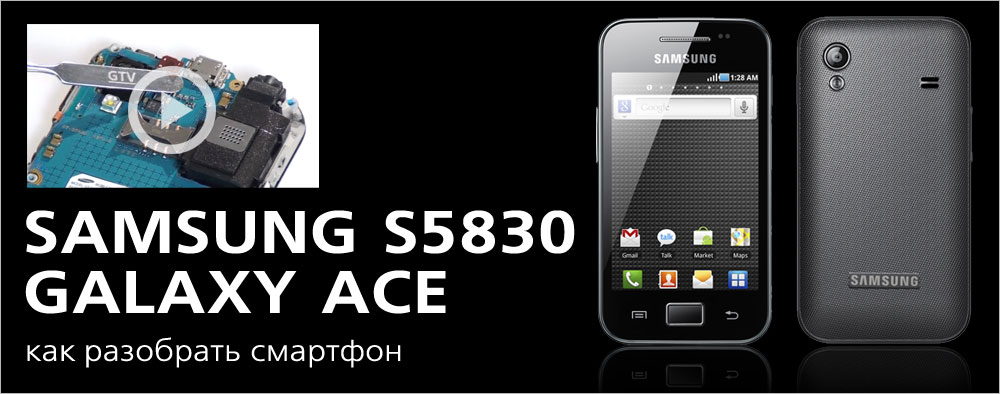
Key features of the gadget are a 3.5-inch HVGA screen with a resolution of 320x480 pixels (alas, only the viewing angles leave much to be desired), a decent-quality camera and Wi-Fi with DLNA support.
It is impossible not to notice that the attractiveness of its appearance Galaxy Ace owes to the acclaimed Apple iPhone 4: the similarities are visible to the naked eye. The dimensions of the smartphone from Samsung are: 112.4x59.9x11.5 mm and weighs 113 g. The dimensions are quite ergonomic: the phone is equally convenient to hold in your hand or carry in your pockets. The assembly of the device is of impeccable quality.
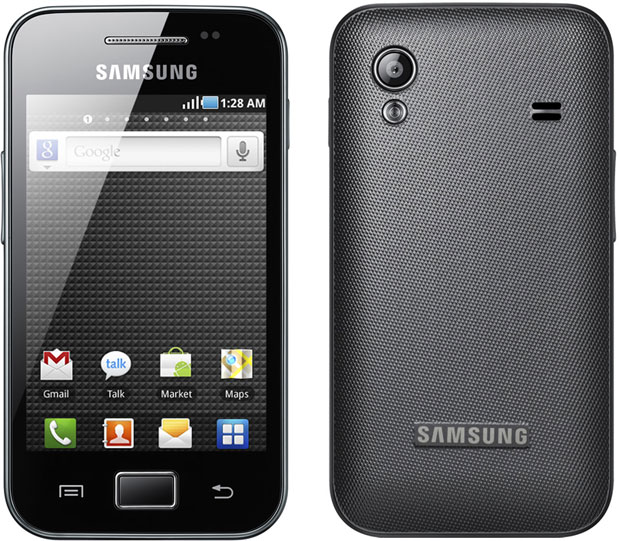
Another positive detail is the completeness of the device with an additional back panel, so that the user can choose between a glossy white and rough black back surface.
The device’s filling is as follows: Qualcomm MSM7227 processor with a frequency of 800 MHz and 256 MB of RAM, Adreno 200 graphics accelerator, Google’s Android operating system, 160 MB of built-in memory for free filling and the possibility of expanding the volume with memory cards. It is worth recognizing that this is not the most advanced functionality, but the Samsung S5830 Galaxy Ace works flawlessly.
Parsing the phone begins with a simple one: remove the back cover, made of fairly flexible plastic, and remove the battery. The Li-Ion battery capacity is 1350 mAh and is typical for smartphones. The average battery charge lasts for a day of normal use: habitually, of course, but I would like more.
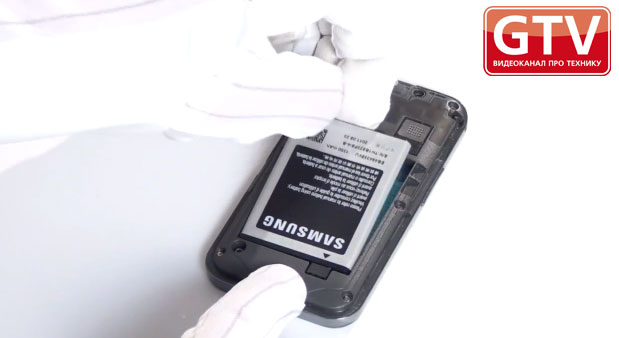
Next, unscrew the 7 fixing screws around the perimeter of the device, then pry off and remove the back panel from all sides (the part looks pretty solid), and then go to the system board.
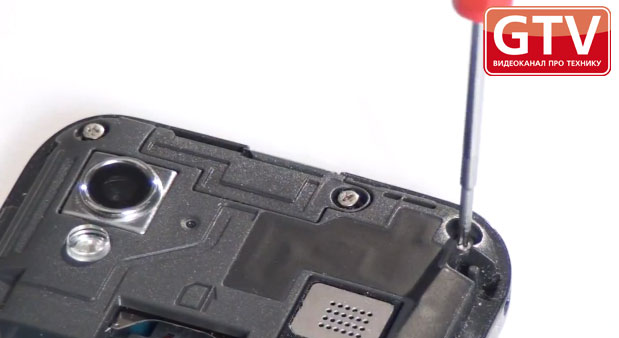

First you need to disconnect the cable and all the side buttons. Then we lift and unfold the board, which can be fully removed by snapping off the display module ribbon cable. We disconnect the camera from the board (quality is not bad for a Samsung device, by the way: 5 MP, flash, digital Zoom and autofocus are available), then a polyphonic module with a headset jack (by the way, the speaker volume of the phone is quite enough for the room, which is impossible with certainty say about the noisy street).

The front side of the system board contains loops with buttons, a microSD card reader (TransFlash, up to 32 GB), a processor, flash, a radio unit, a power controller and a membrane with a Home button.
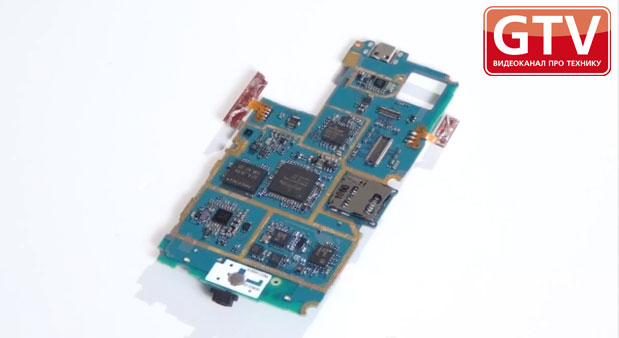
The reverse side of the board contains a system connector, a SIM card reader, a battery connector and a microphone.
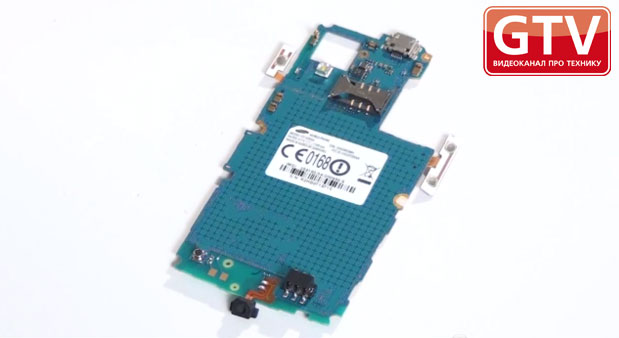
The display module in this model is non-separable. Therefore, if the owner of the Galaxy Ace is not lucky to break the screen, then it will have to be replaced with the module, which is clearly not cheap.
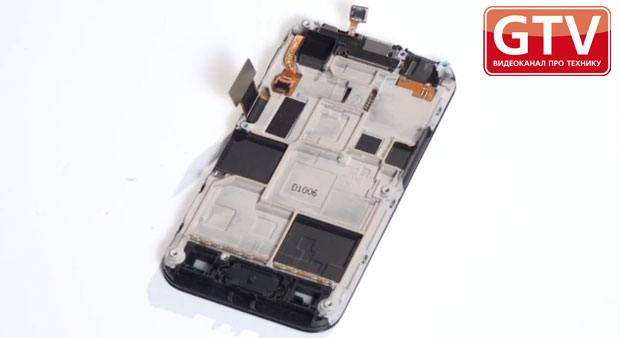
Samsung S5830 Galaxy Ace is an affordable, high-quality and functional solution with a universal design and minor flaws.
The main advantages:
The main disadvantages:
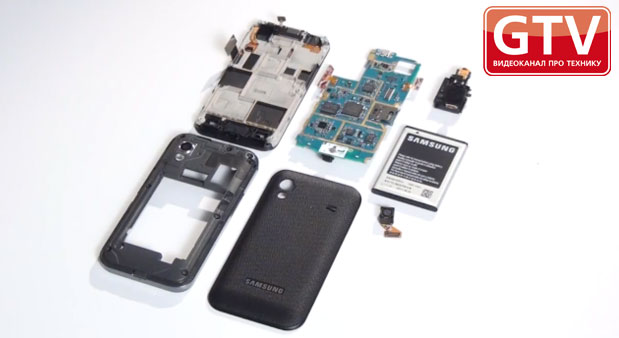

Key features of the gadget are a 3.5-inch HVGA screen with a resolution of 320x480 pixels (alas, only the viewing angles leave much to be desired), a decent-quality camera and Wi-Fi with DLNA support.
It is impossible not to notice that the attractiveness of its appearance Galaxy Ace owes to the acclaimed Apple iPhone 4: the similarities are visible to the naked eye. The dimensions of the smartphone from Samsung are: 112.4x59.9x11.5 mm and weighs 113 g. The dimensions are quite ergonomic: the phone is equally convenient to hold in your hand or carry in your pockets. The assembly of the device is of impeccable quality.

Another positive detail is the completeness of the device with an additional back panel, so that the user can choose between a glossy white and rough black back surface.
The device’s filling is as follows: Qualcomm MSM7227 processor with a frequency of 800 MHz and 256 MB of RAM, Adreno 200 graphics accelerator, Google’s Android operating system, 160 MB of built-in memory for free filling and the possibility of expanding the volume with memory cards. It is worth recognizing that this is not the most advanced functionality, but the Samsung S5830 Galaxy Ace works flawlessly.
Detailed parsing instructions
Begin to disassemble
Parsing the phone begins with a simple one: remove the back cover, made of fairly flexible plastic, and remove the battery. The Li-Ion battery capacity is 1350 mAh and is typical for smartphones. The average battery charge lasts for a day of normal use: habitually, of course, but I would like more.

Rear panel
Next, unscrew the 7 fixing screws around the perimeter of the device, then pry off and remove the back panel from all sides (the part looks pretty solid), and then go to the system board.


Motherboard
First you need to disconnect the cable and all the side buttons. Then we lift and unfold the board, which can be fully removed by snapping off the display module ribbon cable. We disconnect the camera from the board (quality is not bad for a Samsung device, by the way: 5 MP, flash, digital Zoom and autofocus are available), then a polyphonic module with a headset jack (by the way, the speaker volume of the phone is quite enough for the room, which is impossible with certainty say about the noisy street).

The front side of the system board contains loops with buttons, a microSD card reader (TransFlash, up to 32 GB), a processor, flash, a radio unit, a power controller and a membrane with a Home button.

The reverse side of the board contains a system connector, a SIM card reader, a battery connector and a microphone.

We finish the internal review
The display module in this model is non-separable. Therefore, if the owner of the Galaxy Ace is not lucky to break the screen, then it will have to be replaced with the module, which is clearly not cheap.

Summary
Samsung S5830 Galaxy Ace is an affordable, high-quality and functional solution with a universal design and minor flaws.
The main advantages:
- price;
- quality;
- performance (within this segment of smartphones);
- ergonomics;
- camera.
The main disadvantages:
- screen quality;
- no camera button.

